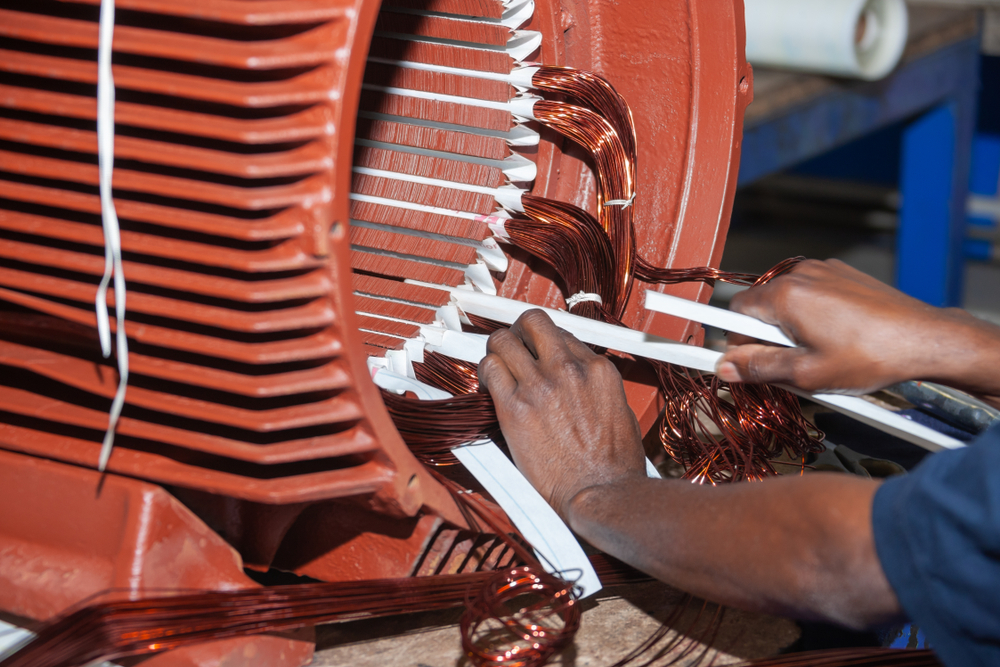A superior electric motor rewinding service can make your existing motor run as good as–and sometimes even better than–new. But superior results depend on several factors that you might not have considered when seeking out an electric motor rewinding shop. Here are some of the things you should think about when selecting a service provider.

An electric motor rewind is a delicate process, and removing the dirt, old insulation and grime accumulated after years of use within a motor is a difficult dirty practice (in most cases). These particles can contaminate the rewinding process. In addition, condensation generated by rapidly changing temperatures can also have a negative impact on the quality of the rewinding process. For these reasons your motor rewind shop should have a climate-controlled clean area dedicated to the motor rewinding process.
Cleaning the stator core can be a harsh, labor intensive process without the right equipment. Chemical-based cleaners and a lot of scrubbing can work, but it takes a lot of time and may even damage the windings. There are better methods for properly cleaning the stator core that are perfectly safe for the windings.
One method is using an ultrasonic cleaner. An ultrasonic cleaner can loosen stubborn deposits and reach places that would be impossible to reach when cleaning the windings by hand.
Another–and probably the best–method for cleaning the windings is using a stator burnout oven. These ovens are specifically designed to burn away the dirt, oil, paint, old insulation and other contaminants at a temperature high enough to burn them away without damaging the stator core.
Tests such as surge and hipot testing and core tests after the motor rewinding services have been completed are essential to make sure that the electric motor is operating the way that it should.
There are a couple of methods used to insulate the motor windings after a rewind. One method is to dip the motor into a varnish tank and “bake” it in a curing oven. Another method is trickle varnishing which connects the winding to a rotating table and electric wire. The spinning of the table heats the winding and a stream of vanish trickles onto the winding head. The varnish travels down the length of the winding, covering it. The current is then increased which heats up the windings further and curing the varnish on them.
The last (and best) method used to insulate the motor winding is the use of a vacuum pressure impregnation tank. This tank preheats the windings before lowering them into the tank filled with insulating resin. Once the resin completely covers the windings, the tank is pressurized to make sure that the resin fully penetrates all of them.
Tekwell uses a precise-control burnout oven to prepare the stator for rewinding, performs the rewind in a dedicated clean area, and then dips the motor in our VPI resin tank. Give us a call (toll free) at 1-888-984-4668 or fill out our quick solution form at the bottom of our Contact page, to get your motor rewound by experts today.